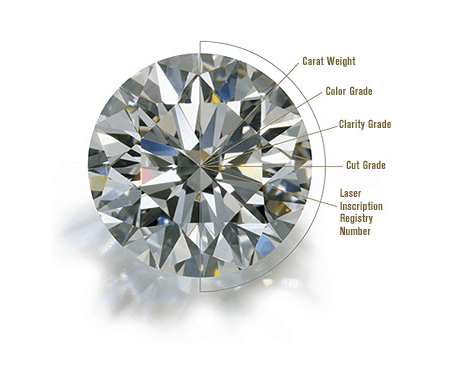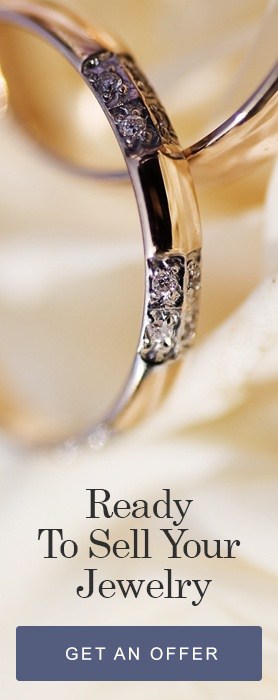The glitter of a beautiful diamond can easily blind us to the reality that before it ended up on our finger, ear or throat, it may have been illicitly sold by rebel groups to fund a brutal war or act of terrorism. Such “blood diamonds” (also called “conflict diamonds”) are believed to be behind the deaths of more than 4 million people in Africa as well as the displacement of millions more.
Thanks to heightened press attention and the blockbuster film Blood Diamond, consumers have grown more aware of the presence of conflict diamonds and are increasingly seeking to purchase diamonds unassociated with bloodshed and war.
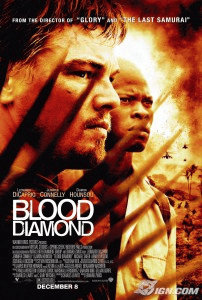 But is that really possible?
But is that really possible?
In theory, buying a conflict-free diamond is indeed possible. In 2003, the diamond industry, in conjunction with the United Nations, scores of governments and non-governmental organizations, established an international diamond certification scheme to prevent rough conflict diamonds from entering the mainstream. It centers on the Kimberley Process Certification.
Under the Kimberley Process, any shipment of rough diamonds sent internationally between member countries are required to be accompanied by a government-validated, forgery-resistant Kimberley Process certificate attesting that the diamonds did not help fund conflict. Exporting countries are responsible for ensuring the validity of the certification while importing countries have the duty to cross-check the contents of the shipment with the details on the Kimberley Process certification.
There is some indication that the Kimberley Process is working. The World Diamond Council, a New York-based organization established in 2000 to monitor and reduce the number of conflict diamonds on the market, maintains that since the institution of the Kimberley Process the number of tainted rough diamonds coming into the world market has dropped from 4% to less than 1%. This means that over 99% of all rough diamonds now coming into the market have not been used to fuel a violent conflict.
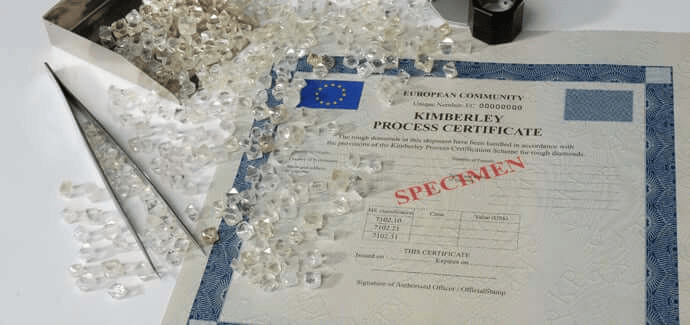
Kimberley Process Certificate from De Beers website
And yet. It is still very difficult for a consumer to be 100% certain that a diamond is conflict free. Many people in the jewelry industry maintain that the Kimberley Process is riddled with corruption and diamond smugglers easily find ways to slip tainted diamonds in with legitimate ones.
Others argue that because the Kimberley Process definition of a conflict diamond is so narrow, many diamonds on the market have been mined in settings rife with violence and unconscionable human rights abuses, even if they haven’t been sold to fund a conflict or war.
So, while it is certainly possible to find a conflict-free diamond when you buy diamonds, you will almost never know whether the diamond you are purchasing is truly untainted. And, it may be a question buyers will ask when you go to sell that diamond later.
How to reduce the probability of buying a blood diamond
While it’s tough to be completely assured that you’re buying a conflict-free diamond, there are four ways you can greatly reduce the probability:
1. Ask your retailer if the diamond is conflict-free.Retailers who claim their diamonds are conflict-free should be able to trace the origin of their diamonds from each supplier in the chain all the way to the mine from which the diamonds were sourced.
When buying a diamond, ask the retailer where the diamond was mined and whether you can see a copy of the company’s policy on buying diamonds as well as a written guarantee from the company’s supplier attesting that the diamonds are conflict-free.
If the retailer cannot answer your questions or provide a System of Warranties – a written statement guaranteeing that the diamonds are conflict-free – you should move on to a different store.
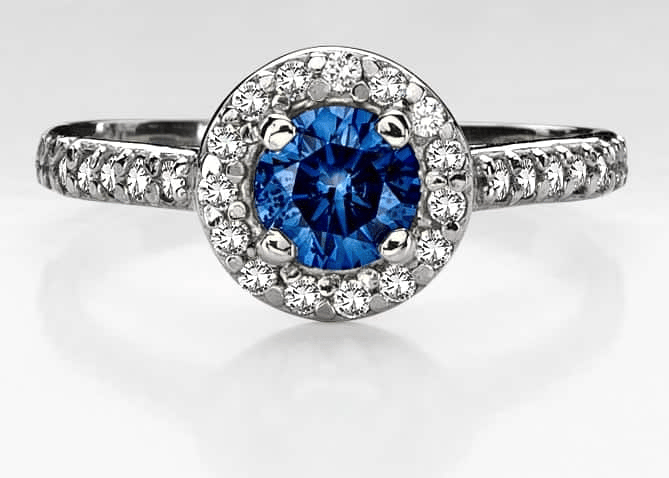
"Halo" microwave ring with 51ct lab-grown fancy vivid blue diamond set with natural white diamonds ($2,495, takaradiamonds.com)
2. Buy ethically-sourced diamonds
Certain countries such Canada, Australia, Botswana and Namibia have trustworthy, ethical policies in place with respect to diamond mining. Each of these countries meet strict labor and environmental regulations and are not experiencing civil war or other rampant acts of political violence. Your chances of obtaining an untainted diamond is greater when it has been sourced through these countries.
3. Buy cultured diamonds.
Cultured diamonds are those grown in controlled laboratory conditions designed to duplicate the conditions and process by which natural diamonds grow in the earth. When cut and polished, man-made diamonds look identical to natural diamonds. Unlike imitation diamonds such as cubic zirconia or moissanite, man-made diamonds are composed entirely of carbon atoms and thus have the same chemical and physical properties as natural diamonds.
Man-made diamonds may be a good choice for jewelry lovers addicted to the fire and sparkle of diamonds but who can’t bear the thought of buying a stone associated with violence or human rights abuses. These diamonds come in a range of hues, from colorless to deep blue, green or even red.
4. Buy vintage diamonds
Diamonds that were mined and cut over 50 years ago are conflict free. Their look is distinctive as diamond cutting techniques and tastes have significantly changed over the past half-century. You can find beautiful vintage diamond jewelry through a reputable antique jewelry dealer, estate sale, or even on eBay.
Read more...
Silver Prices are Down. Is it Time to Buy?
Cartier jewelry exhibit coming to Denver Art Museum
Do you own jewelry made in Germany by master goldsmiths?
Super Bowl championship rings at auction

